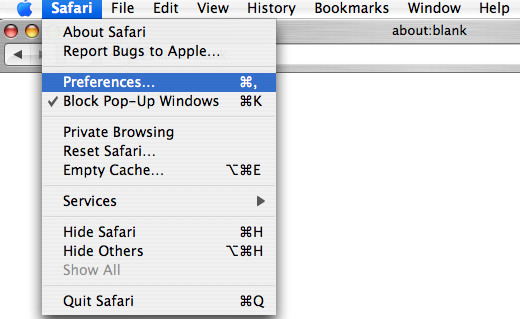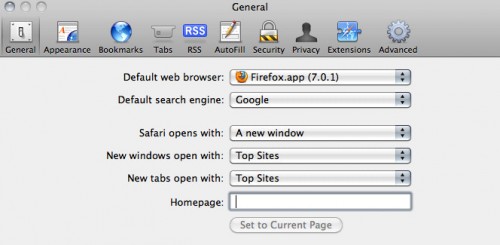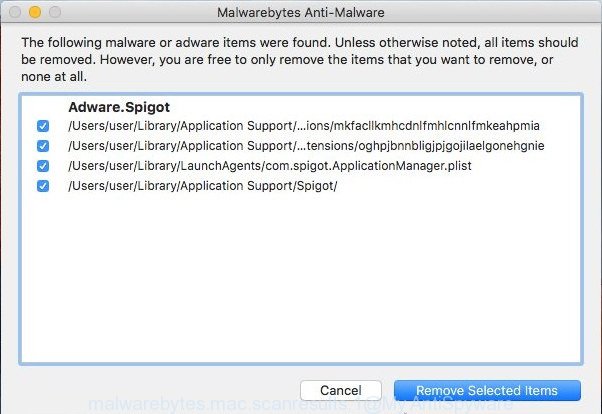DisplayAdvice is a PUP (potentially unwanted program) that belongs to the category of Adware. Adware is form of malware which presents unwanted ads on a MAC system, redirects search results to advertising web pages and collects confidential info for marketing purposes. The DisplayAdvice adware can display banner advertisements, full-screen ads, pop ups, videos, or other varieties of online advertising. Adware can attack your MAC’s web browsers like the Mozilla Firefox, Google Chrome and Safari. Maybe you approve the idea that the advertisements or pop ups is just a small problem. But these unwanted advertisements eat MAC resources and slow down your computer performance

Unwanted ads
Even worse, adware is often harmless, but sometimes the adware you inadvertently download can also be spyware. Spyware can sometimes seek out your data stored on the computer, collect this information and use it to steal your identity.
Threat Summary
| Name | DisplayAdvice, Display Advice 1.0 app |
| Type | adware software, PUP (potentially unwanted program), pop up advertisements, pop up virus, pop ups |
| Symptoms |
|
| Removal | DisplayAdvice removal guide |
How does DisplayAdvice adware get on your MAC OS
Adware usually come bundled with free programs which downloaded from the Internet. Which means that you need to be proactive and carefully read the Terms of use and the License agreement properly. For the most part, adware software and potentially unwanted apps will be clearly described, so take the time to carefully read all the information about the software that you downloaded and want to install on your MAC OS.
Thus, it is clear that the presence of adware on your Apple Mac is not desirable, and you need to clean up your MAC sooner. Follow the steps below in order to get rid of DisplayAdvice ads.
How to Remove DisplayAdvice (removal tutorial)
The adware software is a form of malicious software that you might have difficulty in removing it from your MAC system. Happily, you have found the effective DisplayAdvice adware removal tutorial in this article. Both the manual removal method and the automatic removal method will be provided below and you can just select the one that best for you. If you have any questions or need help then type a comment below. Read it once, after doing so, please bookmark this page (or open it on your smartphone) as you may need to exit your browser or restart your machine.
To remove DisplayAdvice, follow the steps below:
- Manual DisplayAdvice adware software removal
- Automatic Removal of DisplayAdvice adware
- How to stay safe online
- Finish words
Manual DisplayAdvice adware software removal
The step-by-step instructions will allow you manually delete DisplayAdvice from the MAC. If you are not good at computers, we suggest that you use the free tools listed below.
Uninstall DisplayAdvice related applications through the Finder
In order to remove PUPs such as this adware, open the Finder and click on “Applications”. Check the list of installed programs. For the ones you do not know, run an Internet search to see if they are adware, browser hijacker or potentially unwanted applications. If yes, delete them off. Even if they are just a software that you do not use, then uninstalling them off will increase your MAC OS start up time and speed dramatically.
Open Finder and click “Applications”.

Carefully browse through the list of installed applications and delete all suspicious and unknown applications.
After you’ve found anything suspicious that cane be the DisplayAdvice adware or other PUP (potentially unwanted program), then right click this program and select “Move to Trash”. Once complete, Empty Trash.
Remove DisplayAdvice from Mozilla Firefox by resetting web-browser settings
Resetting Firefox browser will reset all the settings to their default state and will remove DisplayAdvice ads, malicious add-ons and extensions. Your saved bookmarks, form auto-fill information and passwords won’t be cleared or changed.
Start the Firefox and press the menu button (it looks like three stacked lines) at the top right of the web-browser screen. Next, click the question-mark icon at the bottom of the drop-down menu. It will open the slide-out menu.

Select the “Troubleshooting information”. If you are unable to access the Help menu, then type “about:support” in your address bar and press Enter. It bring up the “Troubleshooting Information” page as shown in the figure below.

Click the “Refresh Firefox” button at the top right of the Troubleshooting Information page. Select “Refresh Firefox” in the confirmation dialog box. The Firefox will start a process to fix your problems that caused by the DisplayAdvice adware. After, it is complete, press the “Finish” button.
Delete DisplayAdvice adware from Safari
If you find that Safari browser settings like new tab page, search provider and start page having been changed by DisplayAdvice adware, then you may revert back your settings, via the reset browser procedure.
Run Safari web-browser. Next, select Preferences from the Safari menu.

First, click the “Security” tab. Here, select “Block pop-up windows”. It will block some types of popups.
Now, click the “Extensions” icon. Look for questionable plugins on left panel, choose it, then click the “Uninstall” button. Most important to get rid of all dubious plugins from Safari.
Once complete, check your home page and search engine settings. Click “General” tab. Make sure that the “Homepage” field contains the website you want or is empty.

Make sure that the “Search engine” setting shows your preferred search engine. In some versions of Safari, this setting is in the “Search” tab.
Remove DisplayAdvice adware from Google Chrome
This step will show you how to reset Google Chrome browser settings to original state. This can remove DisplayAdvice adware and fix some surfing issues, especially after adware software infection. However, your themes, bookmarks, history, passwords, and web form auto-fill information will not be deleted.
First run the Chrome. Next, press the button in the form of three horizontal dots (![]() ).
).
It will display the Chrome menu. Select More Tools, then press Extensions. Carefully browse through the list of installed extensions. If the list has the plugin signed with “Installed by enterprise policy” or “Installed by your administrator”, then complete the following tutorial: Remove Google Chrome extensions installed by enterprise policy.
Open the Google Chrome menu once again. Further, press the option called “Settings”.

The browser will show the settings screen. Another solution to display the Chrome’s settings – type chrome://settings in the web-browser adress bar and press Enter
Scroll down to the bottom of the page and click the “Advanced” link. Now scroll down until the “Reset” section is visible, as displayed below and click the “Reset settings to their original defaults” button.

The Google Chrome will show the confirmation dialog box as shown on the image below.

You need to confirm your action, click the “Reset” button. The web-browser will start the task of cleaning. Once it’s done, the browser’s settings including search provider, newtab page and start page back to the values which have been when the Google Chrome was first installed on your MAC system.
Automatic Removal of DisplayAdvice adware
Manual removal is not always as effective as you might think. Often, even the most experienced users can not completely remove DisplayAdvice ads. So, we recommend to scan your MAC system for any remaining malicious components with free adware removal applications below.
How to remove DisplayAdvice with MalwareBytes Free
Manual DisplayAdvice adware removal requires some computer skills. Some files that created by the adware can be not fully removed. We suggest that use the MalwareBytes Anti-Malware that are completely free your MAC of adware. Moreover, this free utility will help you to get rid of hijacker, malware, PUPs and toolbars that your MAC may be infected too.

Visit the following page to download the latest version of MalwareBytes AntiMalware (MBAM) for Mac OS.
20947 downloads
Author: Malwarebytes
Category: Security tools
Update: September 10, 2020
After the downloading process is complete, run it and follow the prompts. Press the “Scan” button . MalwareBytes AntiMalware (MBAM) application will scan through the whole computer for the DisplayAdvice adware. A scan can take anywhere from 10 to 30 minutes, depending on the count of files on your MAC system and the speed of your Apple Mac. While the MalwareBytes Anti Malware utility is checking, you can see number of objects it has identified as being affected by malicious software. Once you’ve selected what you want to remove from your MAC system click “Remove Selected Items” button.
The MalwareBytes Anti-Malware (MBAM) is a free program that you can use to remove all detected folders, files, malicious services and so on.
How to stay safe online
Use an ad-blocking tool such as AdGuard will protect you from malicious advertisements and content. Moreover, you may find that the AdGuard have an option to protect your privacy and stop phishing and spam web-sites. Additionally, adblocker software will allow you to avoid undesired pop-up ads and unverified links that also a good way to stay safe online.

AdGuard can be downloaded from the following link.
3755 downloads
Author: © Adguard
Category: Security tools
Update: January 17, 2018
After the download is done, run the downloaded file. The “Setup Wizard” window will show up on the computer screen.
Follow the prompts. AdGuard will then be installed. A window will show up asking you to confirm that you want to see a quick instructions. Click “Skip” button to close the window and use the default settings, or press “Get Started” to see an quick guidance that will allow you get to know AdGuard better.
Each time, when you start your Apple Mac, AdGuard will run automatically and stop intrusive popup ads, block harmful or misleading websites.
Finish words
Once you’ve finished the step-by-step instructions shown above, your machine should be clean from DisplayAdvice and other malware. The Safari, Chrome and Firefox will no longer display the DisplayAdvice ads. Unfortunately, if the steps does not help you, then you have caught a new adware, and then the best way – ask for help here.

















